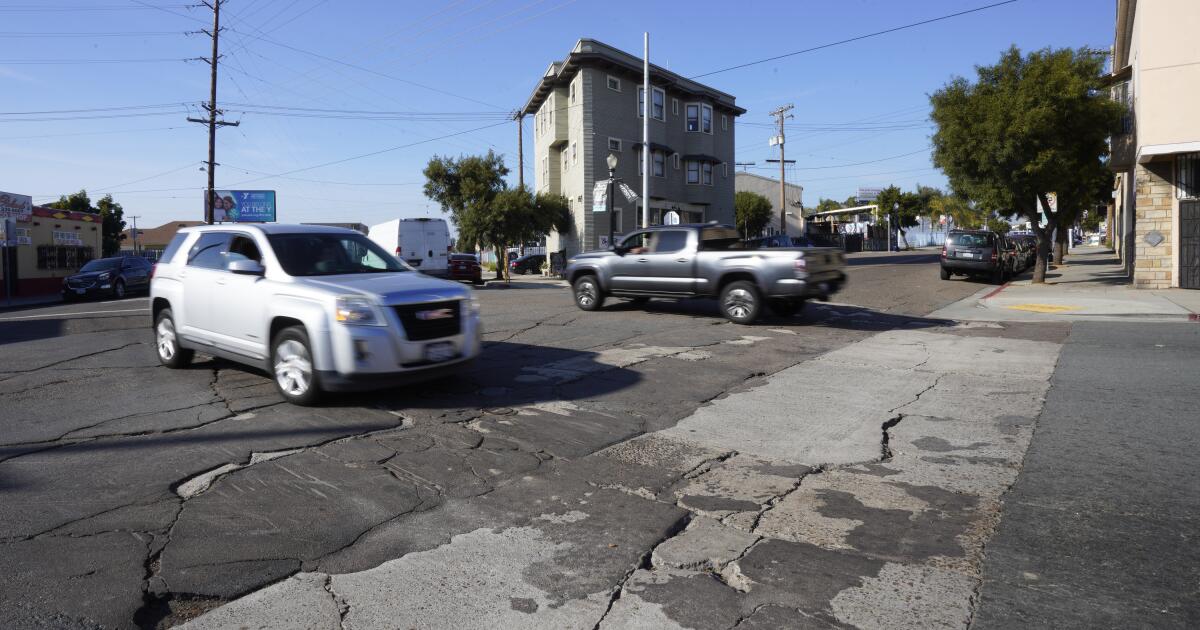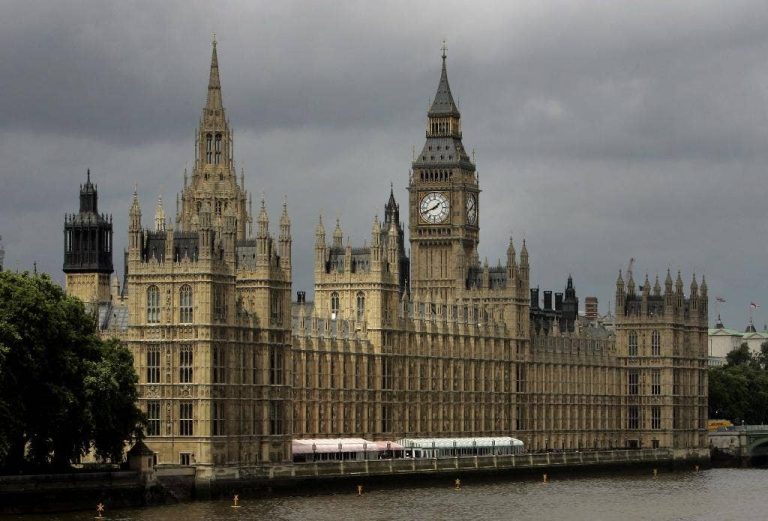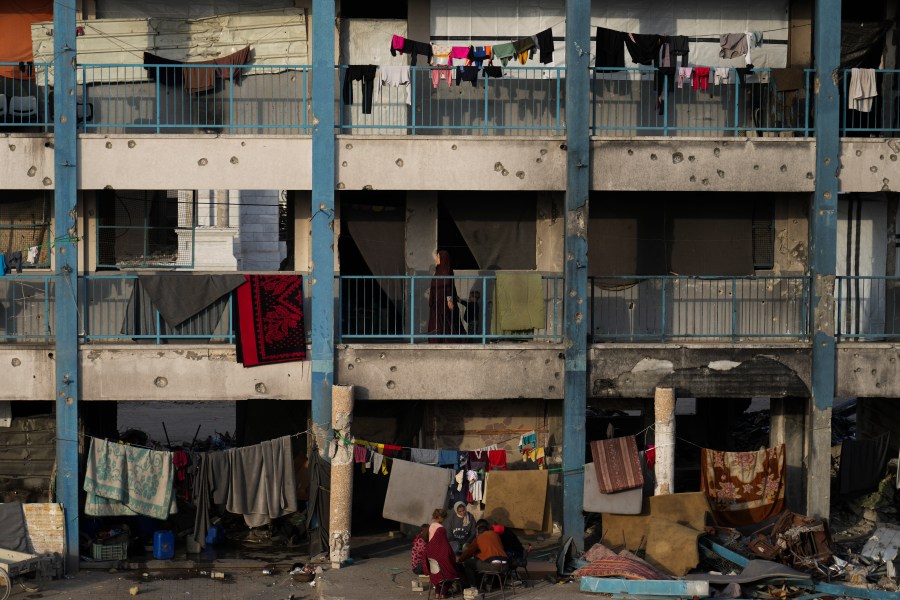

San Diego’s new plan to boost the city’s crumbling streets lacks key details like a comprehensive funding strategy and specifics for upgrading unpaved roads, City Auditor Andy Hanau says in a report released Monday.
The new city plan, which Hanau calls a major step forward despite its shortcomings, also fails to show how San Diego will make street repairs more equitable across city neighborhoods, the audit says.
The 87-page audit also says San Diego’s decision to delay a comprehensive evaluation of its streets by three years has led to inefficient repair decisions because city officials haven’t known where repairs are most needed.
The audit comes nearly one month after San Diego released that comprehensive evaluation, which found that the city’s streets had dropped sharply in quality since a similar survey in 2016.
The new survey dropped the overall pavement rating for city streets from a score of 71, which placed them near the bottom of the “satisfactory” category, to the middle of the “fair” category with an updated score of 63.
The audit says it’s notable that Transportation Department officials had estimated the rating would fall much further, down to 50.
“While this is good news overall, it means that Transportation was using significantly inaccurate data to plan street maintenance work, likely for several years,” the audit says.
But the key finding of the audit is that there are significant details missing from a pavement management plan city officials released in conjunction with the new pavement quality survey.
“While the new pavement management plan briefly describes possible avenues to increase funding, it does not establish a specific funding strategy,” the audit says. “Without a funding strategy and a dedicated funding source, the quality of the street network will continue to decline and deferred maintenance costs will increase.”
The pavement management plan calls for the city to quadruple annual spending on road repair for the next eight years so the city’s rating can rise back to 70, which is considered the industry standard.
Under it, the city would spend $213 million per year, compared to its annual average between fiscal years 2013 and 2023 of $46.4 million.
But Hanau stresses that city officials have only identified $645 million in funding to tackle a $1.9 billion problem.
“The most realistic funding scenarios show that the condition of the city’s streets are likely to get worse,” the audit says. “Continuing to underinvest in street maintenance will lead to more and more streets falling into disrepair. It will then cost more — likely hundreds of millions more — to bring streets up to a 70 rating.”
Hanau wants city officials to estimate how the street network’s rating would decline over the next five years if there is not an increase in funding for street repairs.
He also provides his own estimate.
“If annual funding levels stay the same, the estimated average rating of the city’s street network would continue to decrease from an estimate of 61 in fiscal year 2025 to a rating of 45 in fiscal year 2034,” the audit says.
Hanau also warns that drivers in the city will suffer if San Diego doesn’t start spending more.
“Because the city’s rating of 63 is lower than the statewide average of 65, costs of deteriorating roads to San Diego drivers are likely to be higher than the statewide average of $808 per driver — in the form of additional vehicle repairs, accelerated vehicle depreciation and increased fuel consumption and tire wear,” the audit says.
It says the city’s plan also fails to provide specifics for upgrading 62 miles of unpaved streets and alleys located mostly in low-income areas in the southern part of the city.
“While the pavement management plan discusses several possible strategies for addressing unimproved streets, it does not establish a strategy to be pursued,” says the audit, adding that a dedicated funding source should be identified.
The audit says one option is targeting a certain number of miles or of streets to complete each year.
The audit praised the pavement management plan for including a five-year list of planned projects, estimating how much money is needed to get the city’s rating to 70 and showing ratings for each City Council district.
But the audit says the plan needs to include equity goals and trends.
Pavement quality is relatively consistent across San Diego’s nine council districts, ranging from a 57 in District 2 to a 69 in District 5, the recent survey found. All the other districts got scores between 61 and 67.
The audit harshly criticizes the seven years it took to conduct a follow-up pavement survey to the one completed in 2016, noting that the industry standard is four years.
“We found that for one quarter of street segments, Transportation’s estimates were off by 26 points or more,” the audit said.
This almost certainly made repair efforts less efficient, the audit says, with city officials recommending repairs where they weren’t needed and failing to recommend repairs in crucial spots.
Bethany Bezak, director of the city’s Transportation Department, agreed last week to make all the changes to the pavement management plan recommended by the audit. She said most would be completed by fall 2025.
She also noted that city officials have committed to conducting pavement surveys every four years, noting that money for a survey in 2027 was included in a city five-year financial outlook released in November.
The pavement rating released last month, which is based on a survey conducted by lasers last spring and summer, found that more than one third of the city’s 2,800-mile network of streets is rated either poor, very poor, serious or failed.
San Diego’s overall rating of 63 is below other large cities. San Francisco’s most recent rating was a 74, while Houston got 73, San Jose 71, Phoenix 70 and Los Angeles 67.
But San Diego’s rating was higher than some smaller West Coast cities. Sacramento’s most recent rating was 58, Long Beach’s 56 and Portland’s 55.







